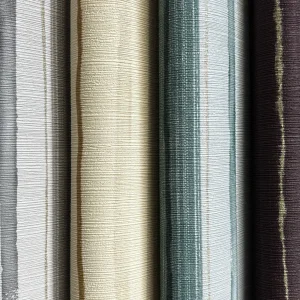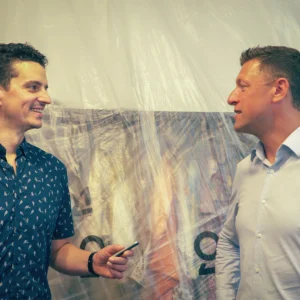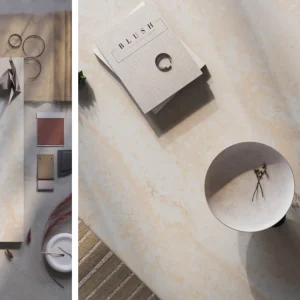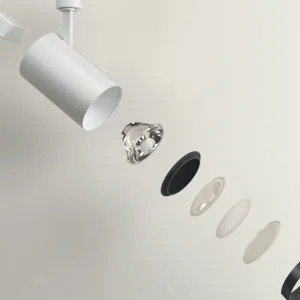
So says the blurb at What Design Can Do 2013 , a conference held in Amsterdam earlier this year, celebrating an array of innovative and socially beneficial practices. But after a stellar presentation (full video below) Blueprint caught up with Hedwig Heinsman, a co-founder at DUS Architects, to get their story in full. They are currently best known for attempting to 3D-print an entire house, a project which is taking place right now on the banks of Amsterdam’s picturesque canals – on which more below. But this energetic, award-winning Dutch practice isn’t jumping on the technological bandwagon; over the last decade, DUS has found its feet between humble community consultations and guerilla street parties.. read on for more.
Blueprint: As a relatively young practice, how did you start to define and position yourself, so validating DUS within a relatively crowded field of architects?
Hedwig Heinsman: I think we kind of see ourselves as very traditional architects. What most people don’t know is that we’ve had an office for nine years and we’ve known each other longer. We met each other at TU Delft: we did a rather strange project about non-standard architectures in the Technical University environment, and we designed a really enormous rubber cocoon made out of 3km of inner bicycle tubes (see slideshow below) that we wove into a structure. It was so much fun to realise this small installation – to really design something on a computer and then to partly make it yourself and experience that.
So how did you develop your practice approach, after you finished at Delft?
The thing is… I was with my partner-in-crime Hans (Vermeulen, also of DUS Architects), we were walking in some architecture fair and he said, ‘I don’t want to be this kind of architect.’ This profession has become more complex in the Netherlands – it often takes 5-10 years before something is built. And actually the moment that the architect comes into the design process is later and later, so architects basically only get to decide what kind of bricks are put on the façade…
And even that is subject to the contractor…
Right. So basically, the architect gets much less say in all the things that really matter. We thought, if you can’t beat them, join them! So we decided to work on a lot of social housing corporations, the transformation of post-war (damaged) areas, and how to deal with them. As architects, we developed a mythology about how to communicate with everyone involved, not only the people living there, but also the municipality and also actually the client in designing these new buildings.
Within a traditional framework, you’re the client, I’m the architect, we have a personal relationship. But nowadays who knows the architect of the flat they rent? Very few people in the Netherlands know this. We want to allow this relationship with architects even if the group of people is larger; you just have to come up with other ways to communicate your ideas
For example?
Its basically the same as this, coffee and cookies. Time and workshops, that’s why in the beginning we got a lot of comments from our peers, telling us ‘You’re more like social workers’. Although at first it is more time consuming, really its not – people are much more likely to understand… to support your design because they feel part of a process?
Its also not only a trick to get people to be committed: if people don’t know something, they don’t get it, so you have to explain it a little bit. Also people are very aware that in architecture you have to make compromises.
This is so present in the discourse in the UK as well, especially when it comes to social housing. So did you find any resistance from the architectural sphere or were people just saying, this isn’t architecture?
Well, in the beginning we didn’t even get the architecture commissions, so we were doing the preliminary works – for example the urban designs, which were then approved. There would be ta point that the architect was going to be chosen and we wouldn’t get the commissions, because we didn’t have the experience. But then came the moment where there was one client who said, I really have the faith because they did this (consultation) so well. It was in Nieuwegein, a new town in the centre of the Netherlands, close to Utrecht – one of the largest communal areas in the Netherlands, 1970s, in really bad condition but with a strong social network, organized really well. If you demolish this whole area, you will also demolish this community base. You can never be sure that people would come back afterwards. So we came up with this alternative process together with the community and the people, we stripped everything to the core but kept the main structure of buildings, a whole new in-fill but living with the elderly and student housing. That took 6 years, last year we completed and I’m happy with it, it’s a nice accomplishment…
Today you presented the structure that was built illegally or without permission, but then that became an example to get real work. Would you say that’s a way of navigating a new method?
Sometimes you don’t even have to make a new design, if you change one rule, you can really use the city in a whole different way, that’s something that my partners and I have in common, we don’t necessarily always need to build something new. Architecture is a really slow profession. Ideally in university students should be able to be free and not be taught about the market and be able to think creatively – but for architecture that’s not entirely true because architecture is so much embedded in society… I think it would be better if students did get a sense of that earlier in their studies, I also notice that the students are really eager and the university is often slow.
Well, in the beginning we didn’t even get the architecture commissions, so we were doing the preliminary works – for example the urban designs, which were then approved. There would be ta point that the architect was going to be chosen and we wouldn’t get the commissions, because we didn’t have the experience. But then came the moment where there was one client who said, I really have the faith because they did this (consultation) so well. It was in Nieuwegein, a new town in the centre of the Netherlands, close to Utrecht – one of the largest communal areas in the Netherlands, 1970s, in really bad condition but with a strong social network, organized really well. If you demolish this whole area, you will also demolish this community base. You can never be sure that people would come back afterwards. So we came up with this alternative process together with the community and the people, we stripped everything to the core but kept the main structure of buildings, a whole new in-fill but living with the elderly and student housing. That took 6 years, last year we completed and I’m happy with it, it’s a nice accomplishment…
Today you presented the structure that was built illegally or without permission, but then that became an example to get real work. Would you say that’s a way of navigating a new method?
Sometimes you don’t even have to make a new design, if you change one rule, you can really use the city in a whole different way, that’s something that my partners and I have in common, we don’t necessarily always need to build something new. Architecture is a really slow profession. Ideally in university students should be able to be free and not be taught about the market and be able to think creatively – but for architecture that’s not entirely true because architecture is so much embedded in society… I think it would be better if students did get a sense of that earlier in their studies, I also notice that the students are really eager and the university is often slow.
Well, in the beginning we didn’t even get the architecture commissions, so we were doing the preliminary works – for example the urban designs, which were then approved. There would be ta point that the architect was going to be chosen and we wouldn’t get the commissions, because we didn’t have the experience. But then came the moment where there was one client who said, I really have the faith because they did this (consultation) so well. It was in Nieuwegein, a new town in the centre of the Netherlands, close to Utrecht – one of the largest communal areas in the Netherlands, 1970s, in really bad condition but with a strong social network, organized really well. If you demolish this whole area, you will also demolish this community base. You can never be sure that people would come back afterwards. So we came up with this alternative process together with the community and the people, we stripped everything to the core but kept the main structure of buildings, a whole new in-fill but living with the elderly and student housing. That took 6 years, last year we completed and I’m happy with it, it’s a nice accomplishment…
Today you presented the structure that was built illegally or without permission, but then that became an example to get real work. Would you say that’s a way of navigating a new method?
Sometimes you don’t even have to make a new design, if you change one rule, you can really use the city in a whole different way, that’s something that my partners and I have in common, we don’t necessarily always need to build something new. Architecture is a really slow profession. Ideally in university students should be able to be free and not be taught about the market and be able to think creatively – but for architecture that’s not entirely true because architecture is so much embedded in society… I think it would be better if students did get a sense of that earlier in their studies, I also notice that the students are really eager and the university is often slow.
When we see you in the press these days, it’s usually as ‘the 3D printing architects’. Tell me a little bit about that.
We are not fascinated by the technological aspect of it, what we are fascinated by is how it relates to all the other projects that we do as well. I’m enjoying the attention because I think its good for the office, but I also want to distance myself from it. We have interesting discussions with other people who have done 3D designs; I’m not necessarily so interested in the aesthetic appeal of it…
So what’s important about the technology in terms of your Kamermaker project? 3D printing is often discussed in its democratic potentials, is that something you want to talk about?
Yes I really think that it will allow in the far future for people to literally figure and shape their environment. It allows us to make things really easily but it also questions the future role of the architect because what if in the future, every one can make these things for themselves…
For Kamermaker, you’re printing a whole house live, almost like a performance?
We have a really big printer! Right now we’re doing all kinds of test prints, its just standing outside in our garden, we built it with the contractor and with a 3D print firm Ultimaker – so we have all their printing knowledge. Everyone who worked on this worked on this voluntarily, so that was very fun but also very tough
Amazing that people are giving up their time…
This was really the case with Ultimaker, they are their own business and are super busy. however there was quite an interesting moment when we had all the machinery done but the motors, wiring and software programming had to be done. They came for a meeting and the whole team stood in the printer and realized we are in the printer and how nice it was. Had we not done that – if we had stuck with nice renderings and tried to convince them, I don’t think it wouldn’t have happened…
When is the printing happening, and what are you printing with at the moment?
The printing happens all the time but really irregularly, if the weather is really crap or the print person is ill for example. We’re on very good terms with the municipality who have offered us a free location for five years. Its very simple, one big 300sqm plot, put the printer there, start printing element by element and putting it in place, over and over! We’re now printing with PP – that’s a plastic, we’re looking into bio plastics – we don’t know much about them but we’re going to test..
Suddenly we’re in this race about ‘who prints the first house’ but this is not really what we had in mind, we see this as a logical continuation of these temporary projects that we do, so why don’t we do it out in the open?
It seems to have come full circle; like you said when you were studying, it was like a performance…
Exactly, only it has become a bit more professional and more people get involved!
Thank you very much, Hedwig.
Grace Quah & Shumi Bose
Here’s the full video of Hedwig’s presentation at WDCD 2013:





